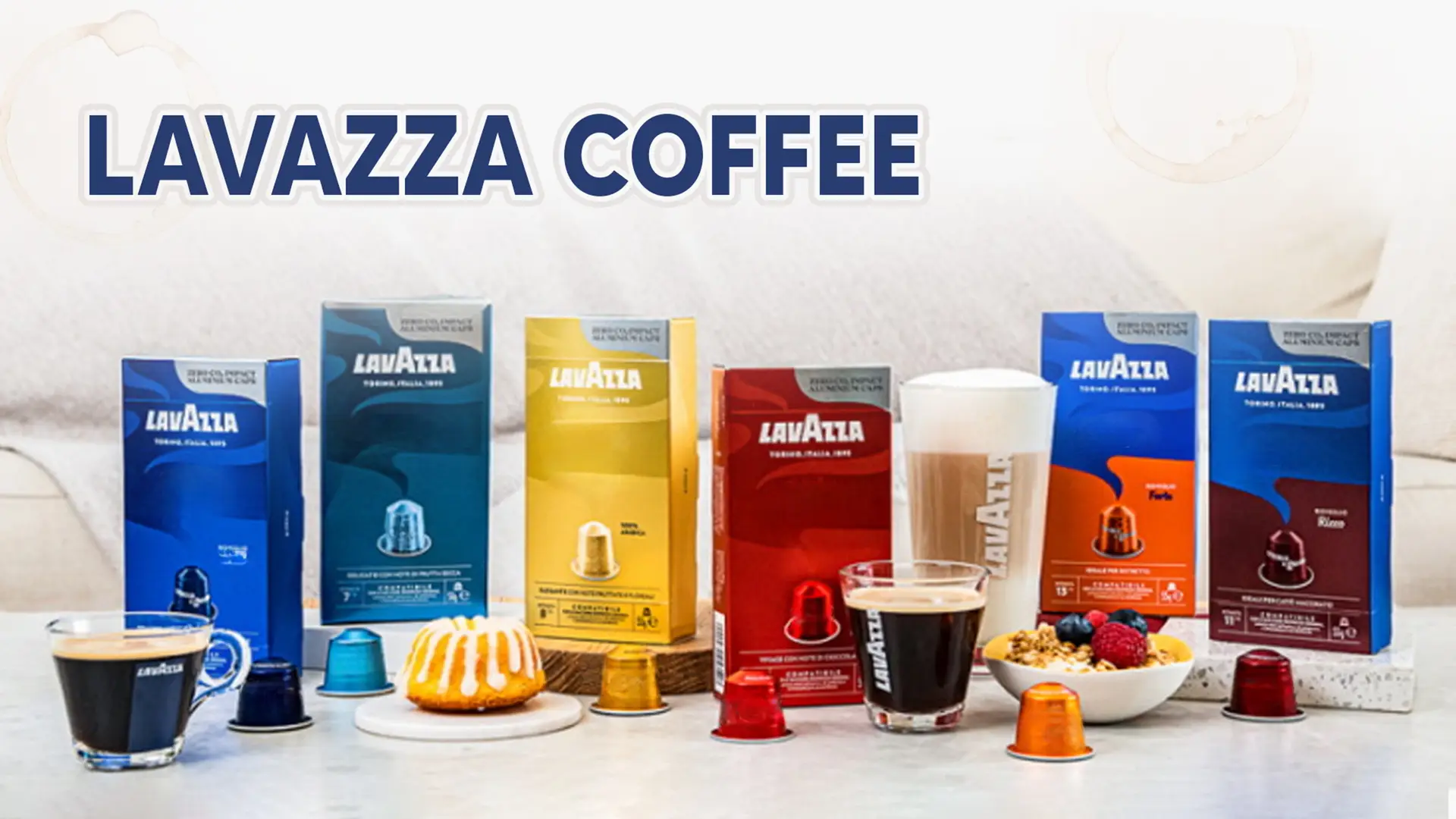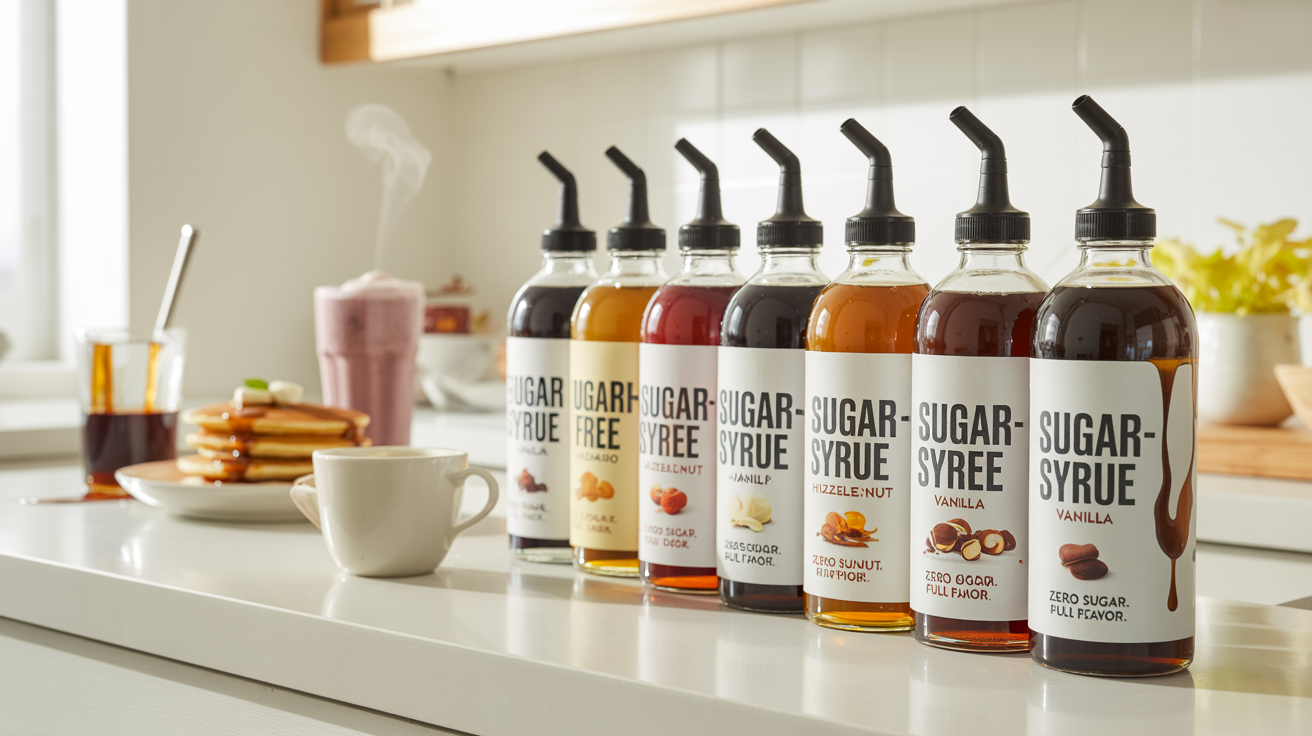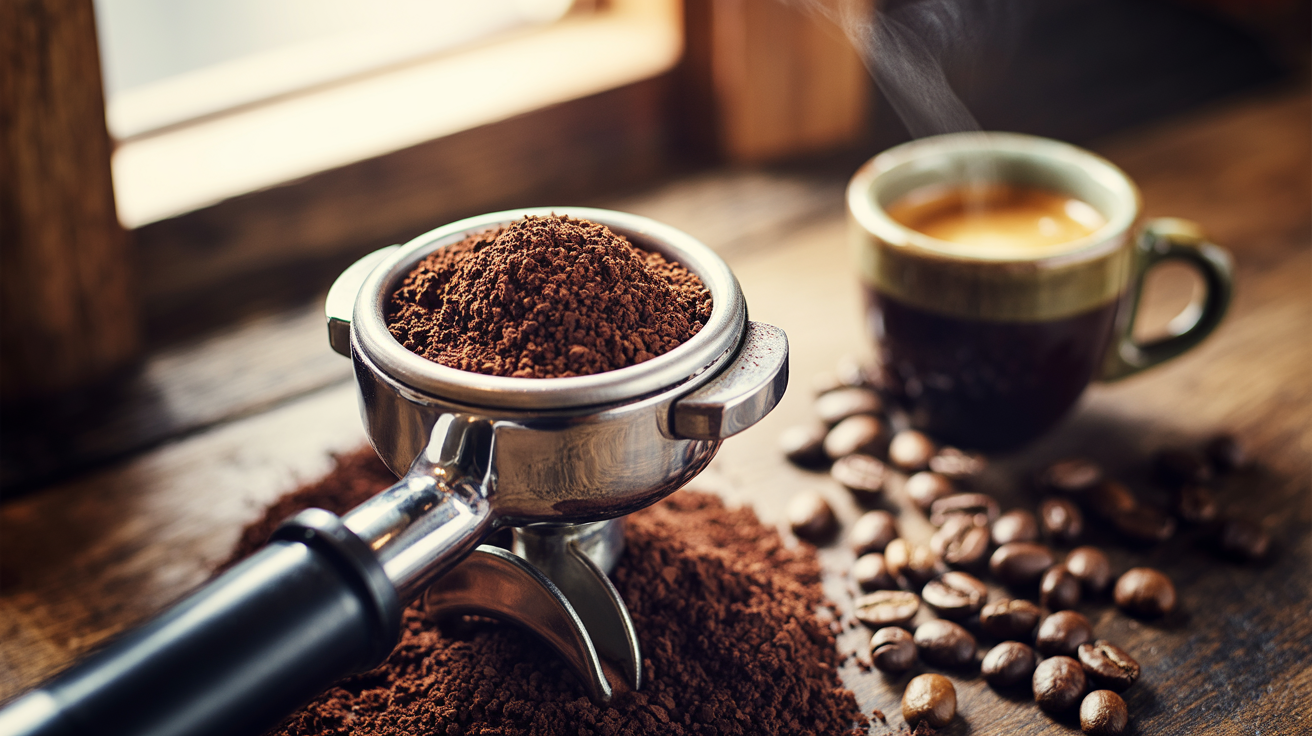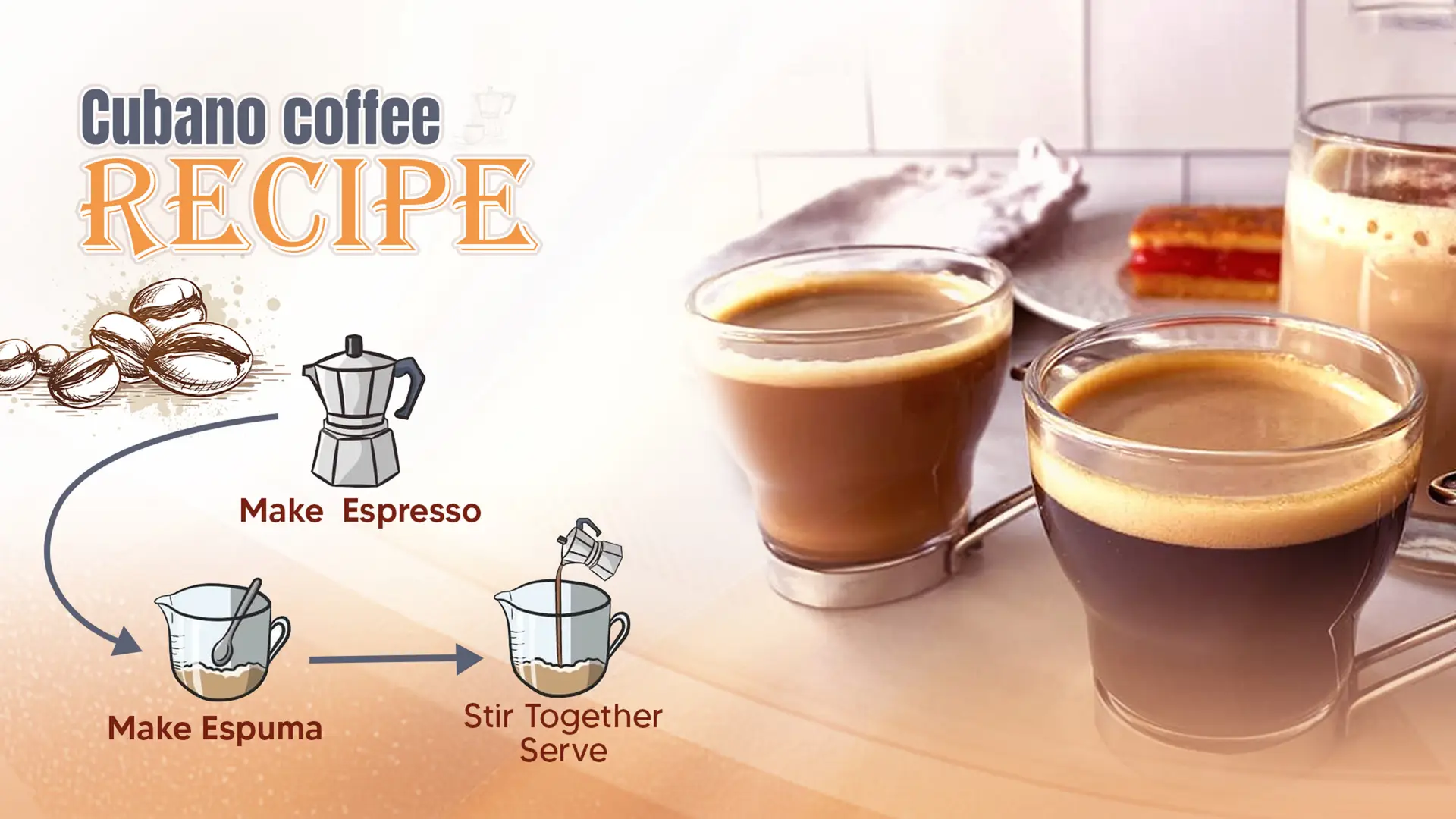Health Benefits of Decaf Coffee: A Smarter Way to Enjoy Your Brew Health Benefits of Decaf Coffee: A Smarter Way...
Read MoreCortado Coffee: A Perfect Harmony of Espresso and Milk!

Cortado Coffee: A Perfect Harmony of Espresso and Milk!


Introduction
A brief overview of cortado coffee and its rising popularity.
A cortado coffee drink is a delicious espresso drink that gives you the flavor of heavily brewed coffee along with tan steamed milk. This beloved drink traces its roots back to Spain and involves a 1:1 espresso-to-milk ratio, creating a creamy and bold flavor combo that caffeine drinkers love. With their silky texture and the bold taste of espresso still shining through, cortados, unlike lattes or flat whites, tend to be trendy toward the refined side of coffee. If you want to impress your friends (especially the casual coffee drinkers) and elevate your daily brew, then learning how to make cortado coffee is the way to go.
Importance of understanding different coffee types for enthusiasts.
Coffee enthusiasts and their brewing and tasting experience will surely benefit from learning more about the various types of coffee. For instance, espresso and cortado have different differentiations when it comes to preparation, texture, or flavor, which all play a role in the enjoyment aspect. Latte employs a novel attitude to work, unlike flat white and cappuccino, which is something that may help people get to know the person at a deeper level. In addition, understanding the nuances of various coffees enables the enthusiasts of the drink to prepare the coffee in different ways, which improves their skills and the flavor of the drink. Embracing coffee’s variety enriches experiences and deepens appreciation for the beloved beverage, offering endless benefits.
II. What is a Cortado Coffee?
Definition and origin of cortado coffee.
Cortado coffee is a delicious espresso-based beverage consisting of equal parts espresso and steamed milk for the perfect balance. Cortados have nomadic origins in Spain; “cortado” translates from Spanish to “cut” and describes how the milk cuts the strength of the espresso. Popular all over the world, it is a favorite among coffee aficionados for its rich flavor and smooth texture. Unlike other milk-based drinks, cortado espresso retains the strong flavor of espresso and adds a silky mouthfeel. Discovering what is cortado coffee is gently pulls you in, making you want to indulge in this fine beverage on your coffee journey!
Key characteristics: espresso and steamed milk ratio.
The precise espresso and steamed milk ratio is what distinguishes cortado coffee from other coffee variants, and it is typically 1:1. That balance produces a drink with the rich flavors present in espresso yet has a creamy mouthfeel from the milk that has been steamed. Because cortados have less milk than lattes, they showcase the rich flavor of the coffee beans themselves, making them a go-to for many people who like strong, bold flavors. Cortado is traditionally served in a 4-ounce glass, and the small size of the drink helps the experience: It allows drinkers to savor each sip. Knowing this ratio is key to making an ideal cortado at home.
Visual description of a cortado.
The cortado is the kind of coffee that catches the eye and usually comes served in a small, transparent glass that allows the drinker to explore its thick layers. The drink is a vivacious cup of dark espresso topped with a thick, silky cloud of steamed milk. The milk, as well, is often textured to a silky microfoam, which creates an artistic look and an air of refinement. The overall look is friendly, with a little sheen on the surface that suggests a complex flavor. Cortado coffee is not only a delicious drink but also a feast for the eyes due to its aesthetic charm coupled with its balanced espresso-to-milk ratio.
cortado meaning
A cortado is a delicious espresso-based drink that originated in Spain and is known for its satisfying balance of espresso and steamed milk. The name “cortado” means “cut” in Spanish and refers to how milk cuts through the strength of coffee. Normally presented in a smaller glass, a cortado is composed of equal parts espresso and milk, giving it a smooth, almost velvety texture. If you are a coffee lover looking for a powerful yet balanced flavor, then this drink is for you. So, if you are thinking of trying a new coffee beverage, the cortado could be perfect for you, and the cortado meaning only helps you understand this amazing drink.

III. How to Make a Cortado Perfectly
Ingredients needed.
Ingredients for Cortado Recipe: You do not need too many ingredients to make a perfect cortado; they are simply ground espresso, steamed milk, and some milk foam. So brew up your favorite double, about 2 ounces, any way you like. Next, steam about 2 ounces of milk until it has a silky, shiny texture, but not too dry, with some microfoam for texture. Add equal parts espresso and steamed milk, which develops the signature cortado flavor. If you want to add a nice touch, you can flavor your cortado with a little vanilla or caramel syrup. This recipe for a cortado will raise your coffee game to new heights!
Step-by-step preparation guide.
This step-by-step preparation guide makes a perfect Cortado. The first step is to get all your ingredients ready: fresh ground espresso, milk, and any flavorings you are using. Start by brewing a double shot of espresso (approximately 2 ounces) using your espresso machine. At the same time, the coffee is brewing. Steam 2 ounces of milk until it is creamy and silky, achieving micro foam that you can pour clearly. Then, pour the steamed milk into the espresso, keeping a 1:1 ratio for a balanced drink. Stir to mix the flavors gently. Serve your cortado in a small glass and enjoy this delightful coffee experience that accentuates the harmonious blend of espresso and milk!
Tips for achieving the best flavor.
The more freshness you can bring to your cortado, the better the flavor (use high-quality, freshly roasted beans!). For best flavor extraction, use a burr grinder to achieve a consistent grind size somewhere between medium and fine. Watch your brewing temperature (around 195°F to 205°F will yield the best extraction). Take care not to overheat the milk when steaming since the milk will lose its sweetness if overcooked; ideally, 150°F to 160°F is best. Also, practice frothing your milk to get a nice silky microfoam to accompany the espresso shots. Try vanilla or caramel flavorings to transform your cortado from good to exceptional!
IV. Comparing Coffee Types
Differences in milk texture and espresso ratio.
The main distinctions between cortado coffee and flat white are found in the ratio of espresso and milk texture. A cortado combines espresso and steamed milk in a 1:1 ratio, offering a rich flavor with silky micro foam. A flat white typically has a 1:3 espresso-to-milk ratio, creating a creamier, smoother drink with a rich mouthfeel. Flat whites have denser micro foam for a creamy mouthfeel, while cortados balance coffee’s complex flavors effectively. These differences make each drink unique, offering various coffee types based on your preferences.
Flavor profiles and serving sizes.
Cortado Vs. Flat White (Differences In Flavor Profile And Size) A cortado, often served in a 4-ounce glass, is strong and bold in flavor with a 1:1 espresso-to-milk ratio that allows the espresso to shine along with a velvety micro foam top. The flat white, in a 5- to 6-ounce cup, has a 1:3 espresso-to-milk ratio for a smoother taste. Many coffee drinkers enjoy both, as they provide different experiences to suit different tastes for drinking coffee.
Cortado vs Latte Coffee
Comparison of milk proportions and espresso strength.
The differences between cortado coffee and latte are the milk proportions and espresso strength. Cortados use a 1:1 espresso-to-milk ratio, enhancing espresso’s strength and vibrancy while showcasing coffee’s natural richness. Served in a smaller 4-ounce glass, the cortado packs a powerful punch in flavor with its silky micro foam. A latte, by contrast, is espresso 1:3 milk, so it’s creamier, milder, and less intense. Lattes, served in 8 to 12 ounces, emphasize steamed milk’s creaminess, appealing to those who prefer smooth coffee.
Discussing taste variations and preferences.
Understanding the diverging taste variations is necessary for the complete enjoyment of coffee beverages. Espresso lovers appreciate cortado for its 1:1 milk and espresso mix, intensifying the coffee’s richness. The majority of coffee lovers enjoy its creamy micro foam and concentrated flavor. For a gentler, creamier coffee flavor, lattes use a 1:3 ratio, significantly diluting espresso strength. Different preferences demand coffee variety, encouraging exploration to discover the best flavors for individual palates.

V. Regional Variations
Explanation of Gibraltar coffee and its similarities to cortado.
Gibraltar coffee drink is similar to cortado, although there are some regional differences between Gibraltar coffee and cortado coffee. Similar to the cortado, Gibraltar coffee is equal parts espresso and steamed milk served in a 4-ounce glass. By using 1:1 espresso to milk, you get a bold flavor without compromising on silky smooth, velvety micro foam. Gibraltar coffee drink is a smaller, full-flavored drink that came from the San Francisco coffee culture and is akin to cortado. Espresso lovers enjoy both for their strong taste, creaminess, and complex flavors.
How regional preferences affect preparation and taste.
Coffee beverages around the world are prepared and tasted according to regional preferences. In Spain, a cortado features a 1:1 espresso to milk ratio, delivering bold flavors representative of local taste. The flat white, popular in Australia and New Zealand, features a creamy 1:3 ratio for mellow flavors. Culture shapes the preferences associated with coffee consumption, ranging from strong espresso shots to sweeter notes of milk chocolate. Understanding these distinctions allows coffee lovers to appreciate the global diversity in coffee preparation and taste nuances.
Recap of the key points discussed.
Final Thoughts, Diving into the coffee industry exposed us to significant lessons in the proportions of milk to espresso yield and the statistics’ geographical relevance. We have looks at the bore flavor achieved by espresso and milk pairing in a cortado which differs from grounded latte’s 1:3 ratio pairing, which was less flavorful but more creamy in nature. Just like the cortado, Gibraltar coffee underscores the value of espresso in a smaller cup of coffee. Different cultures and regions also influence the ways and styles of preparation, adding more value to the global coffee culture. This also allows us to understand and appreciate the rich variety of coffee drinks crafted by many around the globe.
Popular Posts
Coffee Urns: Perfect for Brewing Large Quantities of Coffee
Coffee Urn: Elevate Your Gathering with Perfectly Brewed Coffee! Coffee Urn: Elevate Your Gathering with Perfectly Brewed Coffee! I. Introduction...
Read MoreCoffee Creamer Flavors for a Healthier Cup
Coffee Creamer Flavors with the Best Ingredients Coffee Creamer Flavors with the Best Ingredients 1. Introduction Brief overview of the...
Read MoreLavazza Coffee: Experience Premium Italian Coffee Blends
Lavazza Coffee: Rich, Premium Italian Blends for Every Coffee Lovers Lavazza Coffee: Rich, Premium Italian Blends for Every Coffee Lovers...
Read MoreSugar Free Syrups: Sweeten Your Drinks Without the Calories
Sugar Free Syrup: Healthier Alternatives for Sweetening Your Drinks Sugar Free Syrup: Healthier Alternatives for Sweetening Your Drinks 1. Introduction:...
Read More
Introduction
A brief overview of cortado coffee and its rising popularity.
A cortado coffee drink is a delicious espresso drink that gives you the flavor of heavily brewed coffee along with tan steamed milk. This beloved drink traces its roots back to Spain and involves a 1:1 espresso-to-milk ratio, creating a creamy and bold flavor combo that caffeine drinkers love. With their silky texture and the bold taste of espresso still shining through, cortados, unlike lattes or flat whites, tend to be trendy toward the refined side of coffee. If you want to impress your friends (especially the casual coffee drinkers) and elevate your daily brew, then learning how to make cortado coffee is the way to go.
Importance of understanding different coffee types for enthusiasts.
Coffee enthusiasts and their brewing and tasting experience will surely benefit from learning more about the various types of coffee. For instance, espresso and cortado have different differentiations when it comes to preparation, texture, or flavor, which all play a role in the enjoyment aspect. Latte employs a novel attitude to work, unlike flat white and cappuccino, which is something that may help people get to know the person at a deeper level. In addition, understanding the nuances of various coffees enables the enthusiasts of the drink to prepare the coffee in different ways, which improves their skills and the flavor of the drink. Embracing coffee’s variety enriches experiences and deepens appreciation for the beloved beverage, offering endless benefits.
II. What is a Cortado Coffee?
Definition and origin of cortado coffee.
Cortado coffee is a delicious espresso-based beverage consisting of equal parts espresso and steamed milk for the perfect balance. Cortados have nomadic origins in Spain; “cortado” translates from Spanish to “cut” and describes how the milk cuts the strength of the espresso. Popular all over the world, it is a favorite among coffee aficionados for its rich flavor and smooth texture. Unlike other milk-based drinks, cortado espresso retains the strong flavor of espresso and adds a silky mouthfeel. Discovering what is cortado coffee is gently pulls you in, making you want to indulge in this fine beverage on your coffee journey!
Key characteristics: espresso and steamed milk ratio.
The precise espresso and steamed milk ratio is what distinguishes cortado coffee from other coffee variants, and it is typically 1:1. That balance produces a drink with the rich flavors present in espresso yet has a creamy mouthfeel from the milk that has been steamed. Because cortados have less milk than lattes, they showcase the rich flavor of the coffee beans themselves, making them a go-to for many people who like strong, bold flavors. Cortado is traditionally served in a 4-ounce glass, and the small size of the drink helps the experience: It allows drinkers to savor each sip. Knowing this ratio is key to making an ideal cortado at home.
Visual description of a cortado.
The cortado is the kind of coffee that catches the eye and usually comes served in a small, transparent glass that allows the drinker to explore its thick layers. The drink is a vivacious cup of dark espresso topped with a thick, silky cloud of steamed milk. The milk, as well, is often textured to a silky microfoam, which creates an artistic look and an air of refinement. The overall look is friendly, with a little sheen on the surface that suggests a complex flavor. Cortado coffee is not only a delicious drink but also a feast for the eyes due to its aesthetic charm coupled with its balanced espresso-to-milk ratio.
cortado meaning
A cortado is a delicious espresso-based drink that originated in Spain and is known for its satisfying balance of espresso and steamed milk. The name “cortado” means “cut” in Spanish and refers to how milk cuts through the strength of coffee. Normally presented in a smaller glass, a cortado is composed of equal parts espresso and milk, giving it a smooth, almost velvety texture. If you are a coffee lover looking for a powerful yet balanced flavor, then this drink is for you. So, if you are thinking of trying a new coffee beverage, the cortado could be perfect for you, and the cortado meaning only helps you understand this amazing drink.

III. How to Make a Cortado Perfectly
Ingredients needed.
Ingredients for Cortado Recipe: You do not need too many ingredients to make a perfect cortado; they are simply ground espresso, steamed milk, and some milk foam. So brew up your favorite double, about 2 ounces, any way you like. Next, steam about 2 ounces of milk until it has a silky, shiny texture, but not too dry, with some microfoam for texture. Add equal parts espresso and steamed milk, which develops the signature cortado flavor. If you want to add a nice touch, you can flavor your cortado with a little vanilla or caramel syrup. This recipe for a cortado will raise your coffee game to new heights!
Step-by-step preparation guide.
This step-by-step preparation guide makes a perfect Cortado. The first step is to get all your ingredients ready: fresh ground espresso, milk, and any flavorings you are using. Start by brewing a double shot of espresso (approximately 2 ounces) using your espresso machine. At the same time, the coffee is brewing. Steam 2 ounces of milk until it is creamy and silky, achieving micro foam that you can pour clearly. Then, pour the steamed milk into the espresso, keeping a 1:1 ratio for a balanced drink. Stir to mix the flavors gently. Serve your cortado in a small glass and enjoy this delightful coffee experience that accentuates the harmonious blend of espresso and milk!
Tips for achieving the best flavor.
The more freshness you can bring to your cortado, the better the flavor (use high-quality, freshly roasted beans!). For best flavor extraction, use a burr grinder to achieve a consistent grind size somewhere between medium and fine. Watch your brewing temperature (around 195°F to 205°F will yield the best extraction). Take care not to overheat the milk when steaming since the milk will lose its sweetness if overcooked; ideally, 150°F to 160°F is best. Also, practice frothing your milk to get a nice silky microfoam to accompany the espresso shots. Try vanilla or caramel flavorings to transform your cortado from good to exceptional!
IV. Comparing Coffee Types
Differences in milk texture and espresso ratio.
The main distinctions between cortado coffee and flat white are found in the ratio of espresso and milk texture. A cortado combines espresso and steamed milk in a 1:1 ratio, offering a rich flavor with silky micro foam. A flat white typically has a 1:3 espresso-to-milk ratio, creating a creamier, smoother drink with a rich mouthfeel. Flat whites have denser micro foam for a creamy mouthfeel, while cortados balance coffee’s complex flavors effectively. These differences make each drink unique, offering various coffee types based on your preferences.
Flavor profiles and serving sizes.
Cortado Vs. Flat White (Differences In Flavor Profile And Size) A cortado, often served in a 4-ounce glass, is strong and bold in flavor with a 1:1 espresso-to-milk ratio that allows the espresso to shine along with a velvety micro foam top. The flat white, in a 5- to 6-ounce cup, has a 1:3 espresso-to-milk ratio for a smoother taste. Many coffee drinkers enjoy both, as they provide different experiences to suit different tastes for drinking coffee.
Cortado vs Latte Coffee
Comparison of milk proportions and espresso strength.
The differences between cortado coffee and latte are the milk proportions and espresso strength. Cortados use a 1:1 espresso-to-milk ratio, enhancing espresso’s strength and vibrancy while showcasing coffee’s natural richness. Served in a smaller 4-ounce glass, the cortado packs a powerful punch in flavor with its silky micro foam. A latte, by contrast, is espresso 1:3 milk, so it’s creamier, milder, and less intense. Lattes, served in 8 to 12 ounces, emphasize steamed milk’s creaminess, appealing to those who prefer smooth coffee.
Discussing taste variations and preferences.
Understanding the diverging taste variations is necessary for the complete enjoyment of coffee beverages. Espresso lovers appreciate cortado for its 1:1 milk and espresso mix, intensifying the coffee’s richness. The majority of coffee lovers enjoy its creamy micro foam and concentrated flavor. For a gentler, creamier coffee flavor, lattes use a 1:3 ratio, significantly diluting espresso strength. Different preferences demand coffee variety, encouraging exploration to discover the best flavors for individual palates.

V. Regional Variations
Explanation of Gibraltar coffee and its similarities to cortado.
Gibraltar coffee drink is similar to cortado, although there are some regional differences between Gibraltar coffee and cortado coffee. Similar to the cortado, Gibraltar coffee is equal parts espresso and steamed milk served in a 4-ounce glass. By using 1:1 espresso to milk, you get a bold flavor without compromising on silky smooth, velvety micro foam. Gibraltar coffee drink is a smaller, full-flavored drink that came from the San Francisco coffee culture and is akin to cortado. Espresso lovers enjoy both for their strong taste, creaminess, and complex flavors.
How regional preferences affect preparation and taste.
Coffee beverages around the world are prepared and tasted according to regional preferences. In Spain, a cortado features a 1:1 espresso to milk ratio, delivering bold flavors representative of local taste. The flat white, popular in Australia and New Zealand, features a creamy 1:3 ratio for mellow flavors. Culture shapes the preferences associated with coffee consumption, ranging from strong espresso shots to sweeter notes of milk chocolate. Understanding these distinctions allows coffee lovers to appreciate the global diversity in coffee preparation and taste nuances.
Recap of the key points discussed.
Final Thoughts, Diving into the coffee industry exposed us to significant lessons in the proportions of milk to espresso yield and the statistics’ geographical relevance. We have looks at the bore flavor achieved by espresso and milk pairing in a cortado which differs from grounded latte’s 1:3 ratio pairing, which was less flavorful but more creamy in nature. Just like the cortado, Gibraltar coffee underscores the value of espresso in a smaller cup of coffee. Different cultures and regions also influence the ways and styles of preparation, adding more value to the global coffee culture. This also allows us to understand and appreciate the rich variety of coffee drinks crafted by many around the globe.
Popular Posts
The Ultimate Guide to Perfect Espresso Grounds
The Ultimate Guide to Perfect Espresso Grounds The Ultimate Guide to Perfect Espresso Grounds Introduction: Mastering Espresso Grounds for Great...
Read MoreChristmas Coffee: Festive Flavors to Warm Your Holiday
Christmas Coffee: Delight Your Guests with These Festive Drinks Christmas Coffee: Delight Your Guests with These Festive Drinks Introduction of...
Read MoreDiscover the Best Espresso Coffee for Rich, Bold Flavors
Master the Art of Espresso Coffee: Secrets to the Perfect Brew Master the Art of Espresso Coffee: Secrets to the...
Read MoreBreve Coffee: A Creamy Delight for Coffee Lovers
5 Surprising Benefits of Drinking Breve Coffee Daily 5 Surprising Benefits of Drinking Breve Coffee Daily Introduction Briefly introduce what...
Read MoreAmaretto Coffee: A Sweet, Nutty Twist on Your Favorite Brew
How to Make the Best Amaretto Coffee: Delicious Recipes & Syrup Guide How to Make the Best Amaretto Coffee: Delicious...
Read MoreCubano Coffee: A Bold, Sweet Espresso Experience
Cubano Coffee: Unleash the Secrets Behind Its Rich Cubano Coffee: Unleash the Secrets Behind Its Rich Introduction Highlight the unique...
Read More











